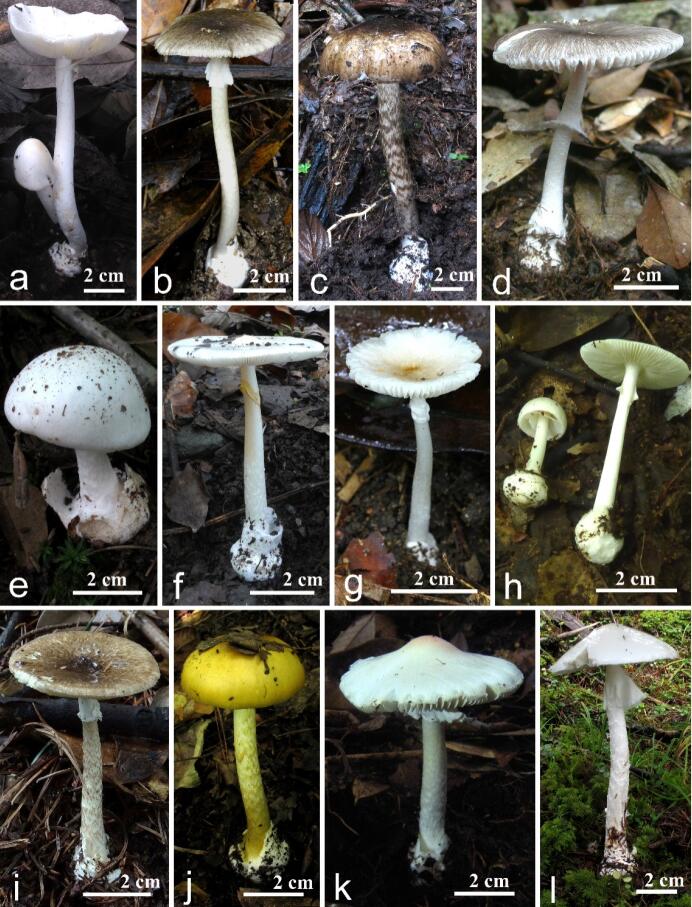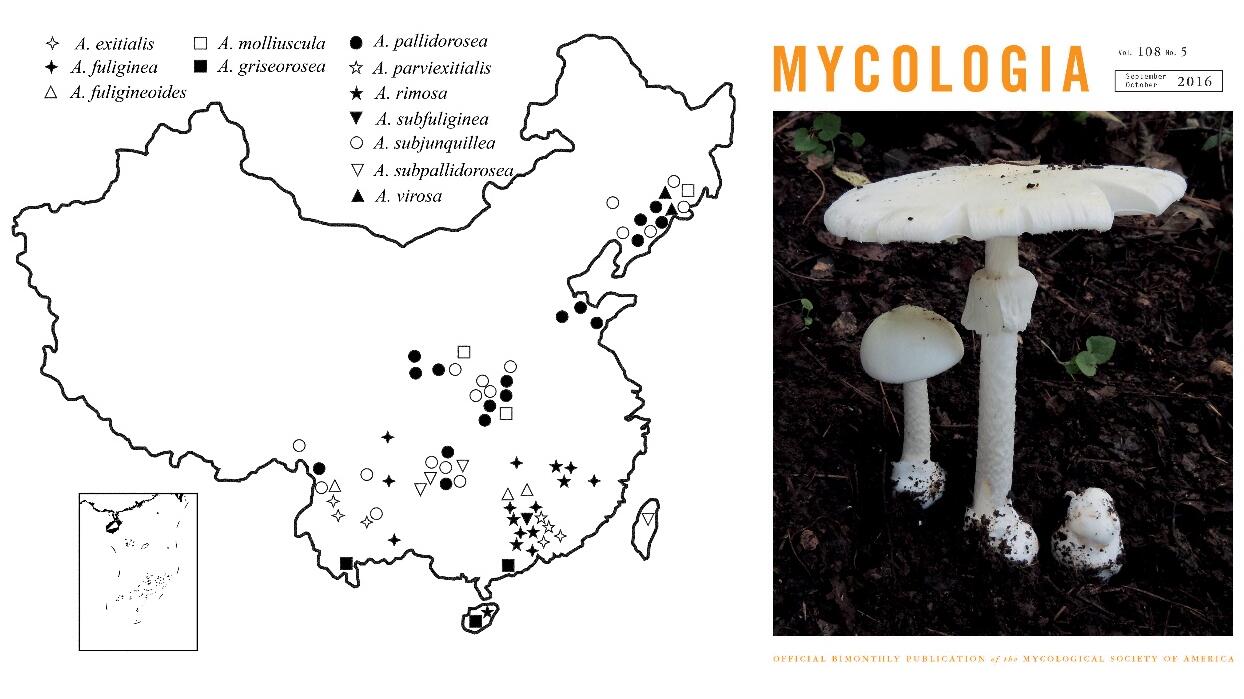Poisonous mushrooms are very rich and diverse in China. Lethal amanitas are a group of wild, deadly poisonous mushrooms containing cyclic peptide toxins, which are chemically stable and resistant to high temperatures.
In the last decades, about 90% of fatal mushroom poisonings worldwide were caused due to eating lethal amanitas which are easily confusable with edible amanitas. Lethal amanitas in Europe (ca. five species) and North America (15 taxa) have relatively been well known. However, lethal amanitas in East Asia are largely unknown.
Based on a five-gene phylogeny in combination with morphological characters and ecological evidence, the research group lead by Prof. YANG Zhuliang at Kunming Institute of Botany, Chinese Academy of Sciences (KIB/CAS) has unveiled the species diversity and geographic distribution patterns of lethal amanitas in China. Twelve lethal Amanita species have been recognized in China, including eight taxa described as new to science by the group in the last few years. Most of these lethal amanitas are distributed in subtropical regions, and only few of them are restricted to the tropical or the temperate.
This study not only provides solid information on the species diversity, ecology and geographical distribution of lethal amanitas in China, but also is useful for the prevention of mushroom poisonings both in China and in other East Asian countries.
The study entitled “Lethal Amanita species in China” has been published in Mycologia: http://www.mycologia.org/content/108/5/993.short.
The work was financed by the Joint Funds of the National Natural Science Foundation of China and Yunnan Province Government (Grant No. U1302263).


Primary known locations of lethal Amanita species in China (Image by KIB)
Contact:
Key Laboratory for Plant Diversity and Biogeography of East Asia, CAS
Kunming Institute of Botany, CAS
Prof. Dr. YANG Zhuliang
Email: fungi@mail.kib.ac.cn




